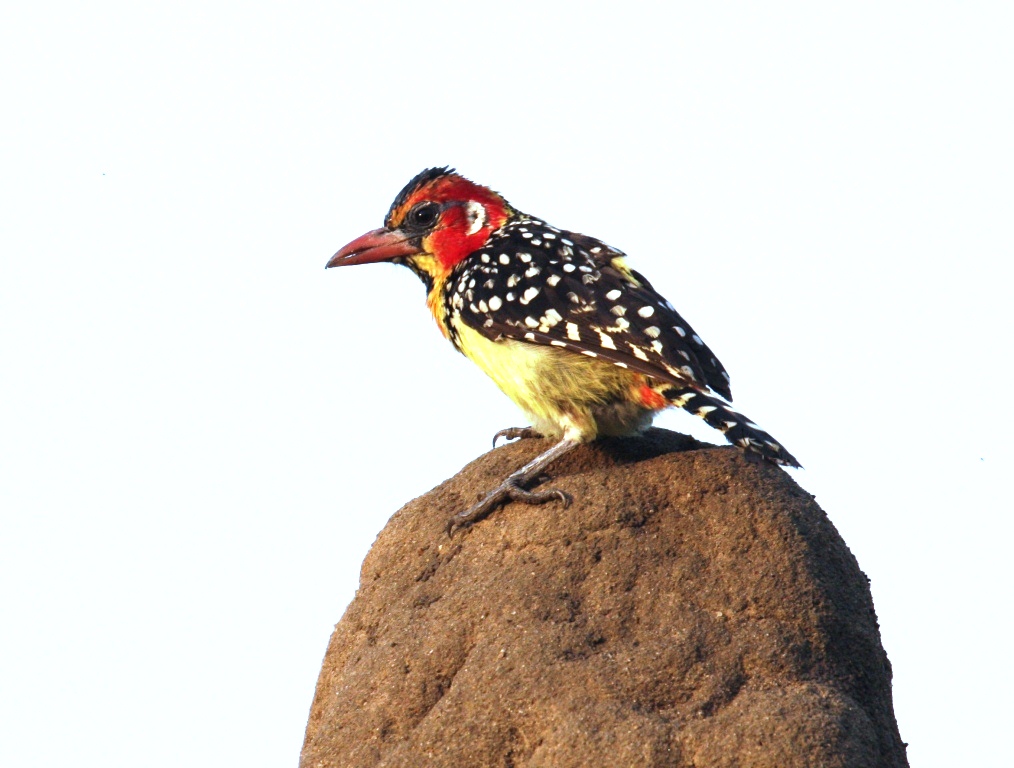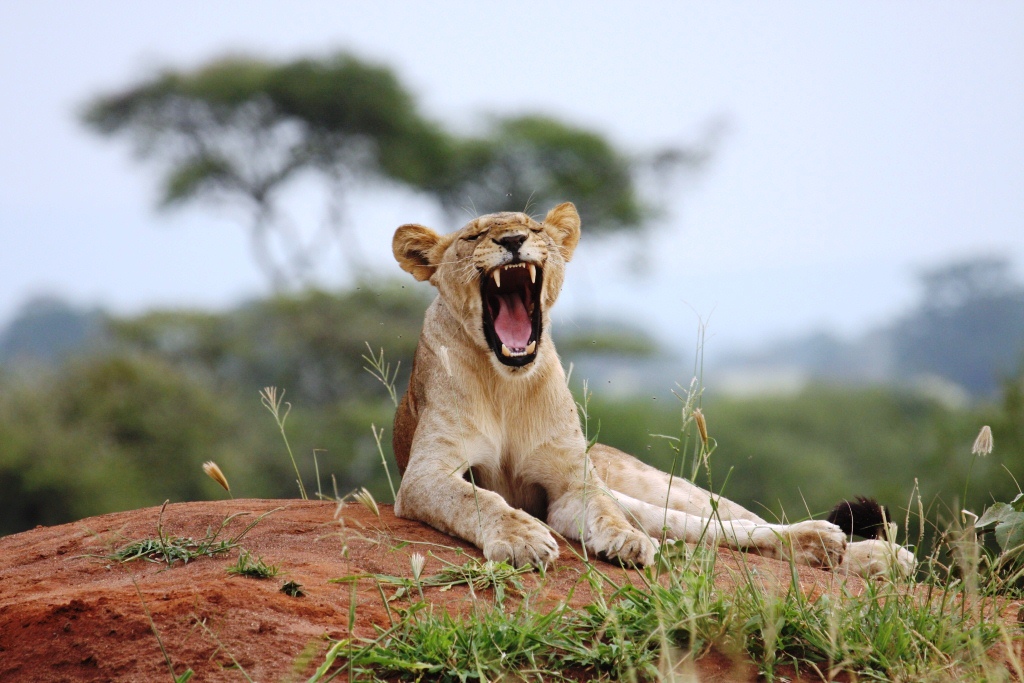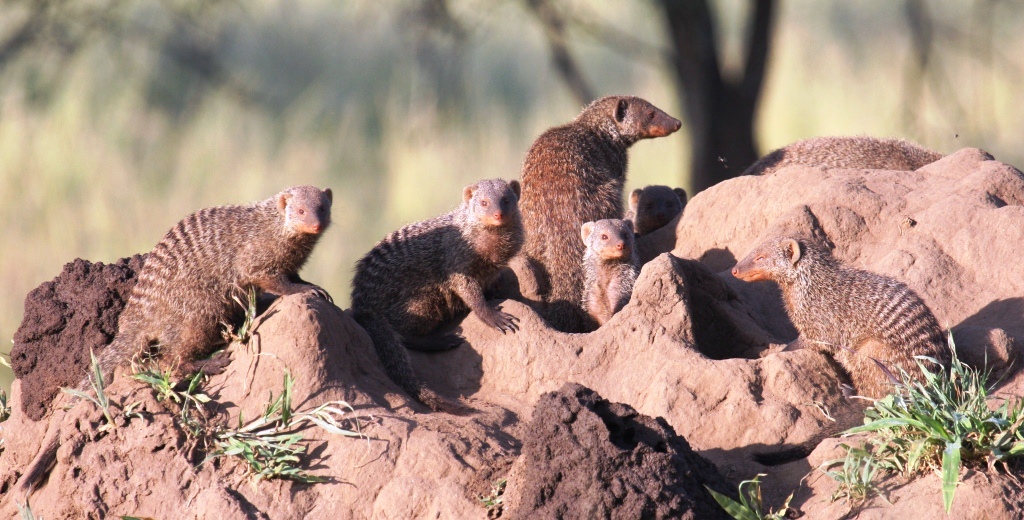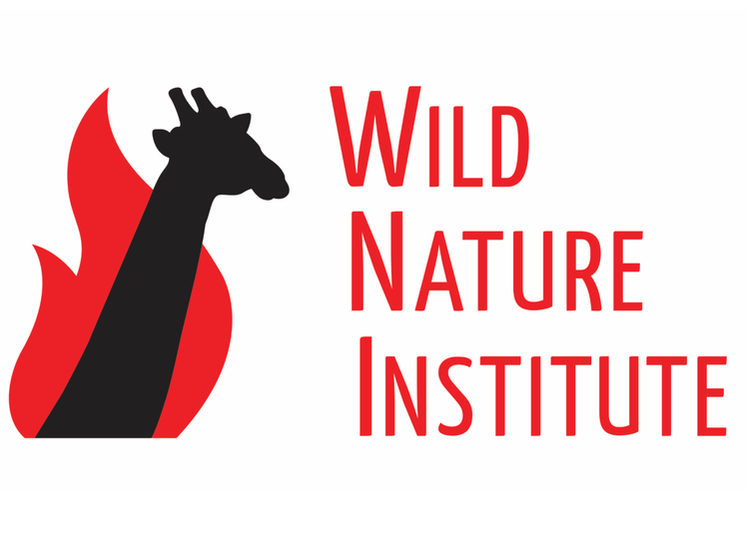|
_Termite mounds are ubiquitous in African savannas, and clearly comprise an important part of the ecosystem. In Tim Corfield’s superb guidebook to Tarangire National Park, he writes:
"If all the members of an average colony of Macrotermes were to walk off in a straight line, nose to tail, in single file, the line would stretch for over 75 km and it would take over 3 months of continuous movement, day and night, to get into that formation! In tropical ecosystems in general the overall mass of termites has been put at between 5 and 50 grams per square km. The overall mass of mammals in Tarangire evened out over the year has been estimated at about 15 grams per square km. It could well be that in terms of sheer animal weight, termites exceed all the elephants, buffalo, wildebeest, zebra, impala, etc. put together!" Corfield also notes that termites bring a vast amount of soil to the surface, and their mounds can tower to heights of up to 30 meters! Some mounds are known to be over 60 years old, and some individual king and queen ants are known to be over 80 years old and still reproducing. Other animals make use of termite mounds. Lions like to hang out on the mounds for better viewing. Mongoose families make their homes within the mounds, and barbets (distantly related to woodpeckers) build their nests inside the mounds. We spotted numerous yellow-necked spurfowl calling from the top of the mounds. Because the termites create habitat required for other organisms, they are known as “keystone species.”
0 Comments
Your comment will be posted after it is approved.
Leave a Reply. |
Science News and Updates From the Field from Wild Nature Institute.
All Photos on This Blog are Available as Frame-worthy Prints to Thank Our Generous Donors.
Email Us for Details of this Offer. Archives
July 2024
|
|
Mailing Address:
Wild Nature Institute PO Box 44 Weaverville, NC 28787 Phone: +1 415 763 0348 Email: [email protected] |
|




 RSS Feed
RSS Feed
